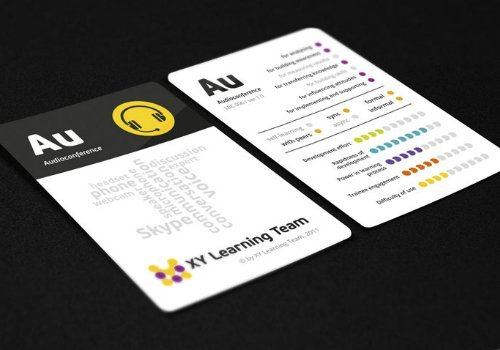A New Learning Design: Unleashing Teachers’ Positive Energy
Is professional learning best known for (a) unleashing teachers positive energy or (b) destroying teachers’ souls? If your answer is (a) the purpose of this article is to urge you to compare the new method with your present method, and recommend you try out the new design with a topic of your choice. If your answer is (b) the purpose of this article is to inform you of a new learning design and persuade you to try it out with a topic of your choice.
A New Learning Design
The "Intentional Design Process" is a new learning design whose framework is a matrix. The framework contains 3 different types of research-based connections. The categories are content connections, processing connections, and classroom ecosystem connections.
1. Content Connections
Content connections embed knowledge and intellectual skills. There are 4 content connections: analyze, create, monitor, and evaluate.
2. Processing Connections
Processing connections manage attention, assess motivation, increase teachers’ awareness of and ability to control his or her thinking processes, and use knowledge or skill to solve problems. There are 3 processing connections: the self-system, the metacognitive system, and knowledge utilization.
3. Classroom Ecosystem Connections
Classroom ecosystem connections identify aspects of internal dialogue teachers must have with the content in order to accept that content as their own. There are 3 classroom ecosystem connections: connect, reflect, and apply.
The Delivery Framework
The delivery framework organizes content, processing, and classroom ecosystem entities into categories that combine to create a unique set of boundaries for every design task (Aka learning activity). For example, the boundaries for the first learning activity are the analyze content connection, the self–system element of examining importance, and the connect classroom ecosystem connection.

The Design Process
The 5-step design process gives every learning activity its unique shape, structure, and strength. Various steps in the process bring the many different entities together at a central point and blend them together into a multi-dimensional learning activity that personalizes professional learning.
Linear Steps
The first 3 steps in the process are linear in nature and focus on understanding connections. They proceed sequentially from identifying connections within the task by defining the connections to choosing connection characteristics. Teacher educators identify connections for step 1, examine definitions during step 2, and establish a focal point for each connection during step 3.
Nonlinear Steps
The last 2 steps in the process are nonlinear in nature and focus on using connections. Developing instructional goals for each connection and creating design tasks requires reflective thought and this frequently leads to a back-and-forth movement between the design task and the goals.
You Are Invited
It’s impossible to judge a book by its cover, a design framework by its outward appearance, or the process by short descriptions. What's needed is more information and an opportunity to use the process. There is a resource that allows you to use the process. In addition, there are 3 resources that provide more information. You are invited to learn more about the new learning design and how it works, so you will be able to access its' worth to you as an educator.
Try It Out
There is a Free Preview set up for readers who would like to try the design out with a topic of their choice. Readers who select this option will create the first learning activity from the framework.
Read More
There are 3 sources of information that relate to the learning design and how it works. The publisher is offering readers an extended preview for Fulfilling the Needs of Teachers. There is also more information about the resource base of the learning design in Creating Professional Development that Works: What Every Teacher Educator Needs to Know. In addition, there is a website that contains information about topics that relate to the learning design.
Final Thoughts
The frameworks of the majority of current learning designs enable teacher educators to produce activities that provide content information or deliver a specific type of feedback. They address the cognitive needs of teachers. They do not address processing connections or classroom ecosystem connections and this destroys teachers’ souls. They represent professional learning as it is.
The framework of the "Intentional Design Process" produces 3-dimensional learning activities. The framework enables teacher educators to produce activities that address learners’ concerns as teachers and meets their needs as adult learners. This framework addresses the cognitive and affective needs of teachers. Activities teachers create using this framework unleash teachers’ positive energy and represent professional learning, as it should be.









